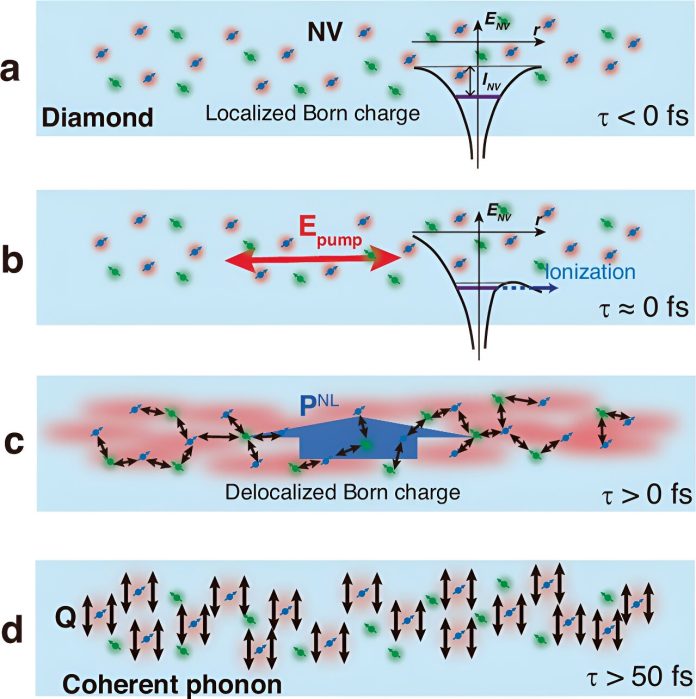
A team of researchers from the University of Tsukuba has made an exciting discovery about the behavior of particles in diamond crystals.
They observed a special type of quasiparticle called a polaron, which forms when electrons interact with the vibrations of the crystal lattice around tiny defects known as color centers.
These findings, published in Nature Communications, could lead to new advancements in quantum sensing technology.
Diamonds are not just beautiful gemstones; they can also contain tiny imperfections called color centers.
One common type is the nitrogen-vacancy (NV) center, which forms when a nitrogen atom replaces a carbon atom in the diamond and leaves a nearby gap or vacancy.
These NV centers are incredibly sensitive to their surroundings, such as changes in temperature or magnetic fields.
This sensitivity makes them valuable for developing high-precision sensors.
However, understanding how NV centers interact with the surrounding crystal lattice has been a challenge. The researchers addressed this by creating extremely thin sheets (nanosheets) of diamond with carefully controlled NV centers near the surface.
They then used ultrashort laser pulses to study how these NV centers affected the lattice vibrations of the diamond.
The experiments revealed something surprising: the lattice vibrations around the NV centers were amplified by about 13 times, even though the density of these centers was relatively low compared to other types of defects.
This significant increase in vibration amplitude suggested that something unusual was happening at the atomic level.
To understand this better, the researchers performed advanced calculations and found that the NV centers caused an uneven distribution of positive and negative charges. This led to the formation of a special type of polaron, a quasiparticle that consists of a free electron (or carrier) surrounded by a “cloud” of phonons, which are particles representing lattice vibrations.
Interestingly, this type of polaron, known as a Fröhlich polaron, was thought not to exist in diamonds—until now. The team’s findings show that these polarons can indeed form in diamond nanosheets with NV centers, opening up new possibilities for using diamonds in quantum sensing applications.
This discovery not only deepens our understanding of the complex interactions within diamond crystals but also points to new ways to harness these properties for advanced technologies. Quantum sensors based on NV centers and polarons could offer even higher sensitivity and spatial resolution, potentially revolutionizing fields like medical imaging, environmental monitoring, and beyond.
Source: University of Tsukuba.



